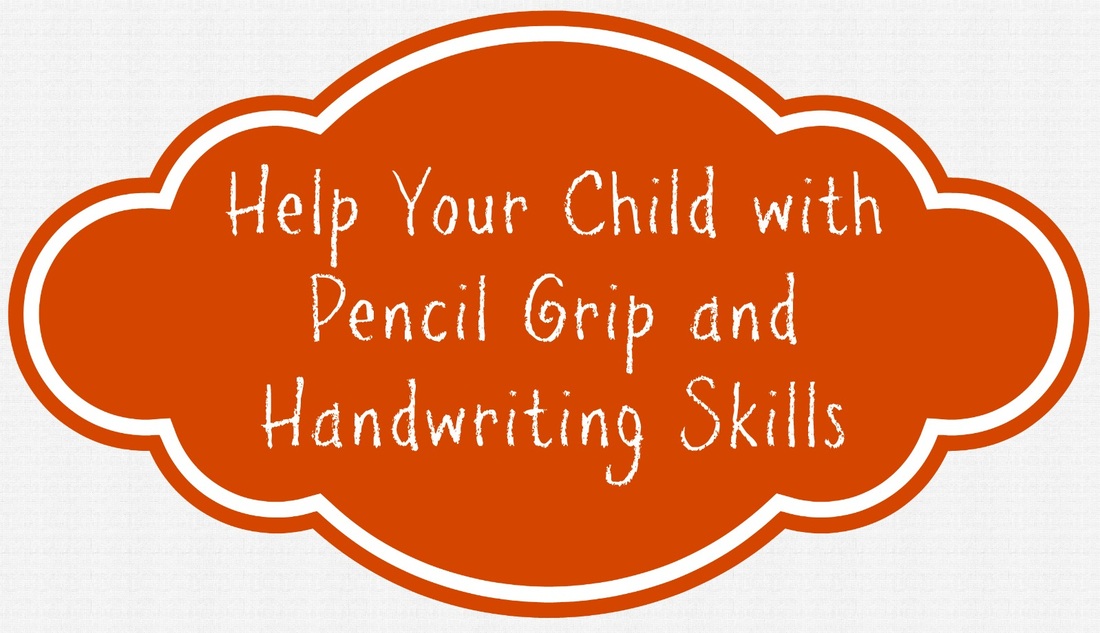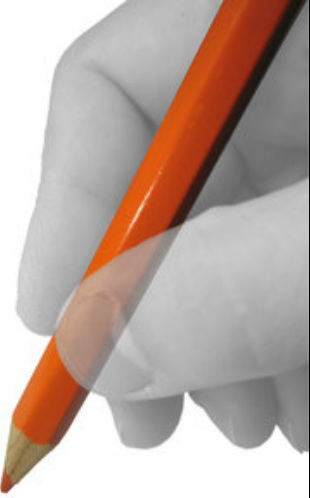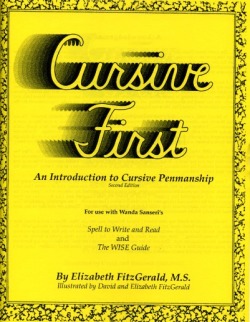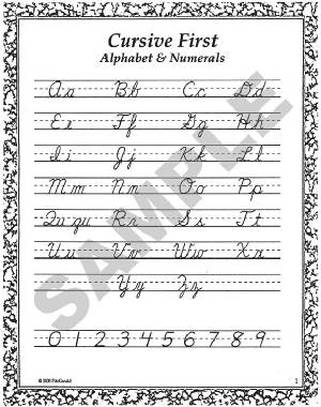|
Sometimes, teaching a child how to hold a pencil seems so difficult - and yet it's so important to a child's future skills in writing and many academic tasks. I had a little bit of trouble teaching my girls how to hold a pencil properly, but it wasn't too painful. In our spelling/reading/writing curriculum when they were beginning readers (Spell to Write and Read), there was an instructional paragraph and a diagram of how to help children learn how to hold the pencil correctly, and I found that helpful. It's not that a child can't write well with an improper pencil grip...it's just that the likelihood of that child not enjoying writing is much higher. Their fingers, hands, and wrists easily get tired and cause them to not want to practice handwriting skills or to write lengthier paragraphs. Also, when a child has a confident and comfortable pencil grip, he or she will generally have the tendency to write neater than if he or she did not. I can't promise that my children have a "perfect" pencil grip. It's not exactly like it you'll see it in the videos below. But it's pretty close! One thing I did do correctly when the girls were just learning to write was that I recognized that Kelsi (daughter #1) had very poor fine motor skills. She literally could not write in manuscript (print). Even though her mental and verbal skills were advanced, she had a lot of difficulty holding pencils, markers, and crayons and trying to use them well. Manuscript printing requires the writer to pick up and put down his or her pencil tip frequently, and this creates a problem with transitioning from one letter to the next, and in writing step-by-step within individual letters. Kelsi also had a visual tracking disorder, which made writing a bit more difficult for her. I have the same visual problem. While it took Kelsi and I a tad bit longer to learn how to blend letters and phonograms together using an excellent reading program, we did catch on. (I was taught to read using a very similar method when I was a child.) Fortunately, her tracking disorder was not severe enough to require vision therapy. When she started the first grade at home, I began using an old-fashioned technique that I had heard from a lot of people in their 60s, 70s, 80s, and 90s: Teach cursive first. What? Are you crazy? Over the years, I have spoken with many older and wiser people who have told me that when they attended public schools in the 20s, 30s, and 40s, they were taught to write using cursive first. Later, when their cursive handwriting was eligible and neat, they were taught how to print for the purpose of writing on diagrams, posters, and science labs. I know that some Americans in that era did learn to print first, however. Some of them probably grew up in the more "progressive" states like California and New York, which were some of the first states to experiment with "newfangled" ideas in education. From what I've been able to learn, though, many people around the world were taught to write using cursive handwriting first. Since the author of the reading/spelling/writing program we used (Mrs. Wanda Sanseri) also recommended to me in one of her classes that we teach our children cursive before manuscript, I decided to give it a try.
I shouldn't have been concerned! Amazingly, within three weeks, her cursive handwriting was at the fourth grade level, about where a child would be if she had been writing in cursive for one full year. Three months later, her cursive handwriting was as nice as a junior high student who had neat cursive writing. One year later, her cursive handwriting was as beautiful as an adult who wrote neatly in cursive! After a couple of years using cursive handwriting, Kelsi wanted to begin learning printing. This time, her fine motor skills were ready! I find it interesting that Kelsi really enjoys most fine motor activities now, and she does them well. In fact, fine motor skills are her strength. She enjoys playing the violin and piano, hand sewing, cross stitching and embroidery, keyboarding, drawing, and painting. All from a child who, at the age of 6, could barely hang onto a pencil. If your child, no matter what age, is struggling with holding a pencil correctly, I would suggest that you consider focusing on this and correcting it. It may be painful; it may not be pretty. But I do think it is important to at least make this a big priority in your child's life. If I had been able to watch these videos when my girls were young, I would have had more confidence in explaining the pencil grip in a way that made sense to them. If you have older children, the preschool videos obviously may not be appropriate. But the first one will! I hope you will find these useful for your own children or grandchildren, or perhaps a child in your neighborhood or at your church. This first video will teach you how to show your child to hold a pencil correctly: This excellent video will demonstrate how you, as a parent or teacher, can make a quick, inexpensive pencil grip that will really work well for most children: Disclosure: This review was provided for you from my own experiences in teaching handwriting. My copy of Cursive First was purchased by me years ago to use with my children. I was not provided any compensation or free product in exchange for this review.
7 Comments
Julieanne
8/20/2010 01:08:07 pm
Kelsi, too funny! I love you, and even though you burned yourself making pancakes, thank you for all that you do for our family!
Reply
Becky
8/20/2010 03:40:24 pm
My Mom was a Kindergarten teacher and she worked so hard on this. After talking to her about it years ago, I began to observe. So many people have a BAD problem, wonder how they can write and how their hands must hurt!
Reply
Cheri
8/20/2010 03:41:12 pm
It's something I deal constantly with in my classroom.
Reply
Julieanne
8/20/2010 03:41:48 pm
Cheri, did you happen to watch the videos I posted there? Did you see the cotton ball technique for holding a pencil? Wow. I sure wish I had known this when the girls were younger.
Reply
Jayne
8/20/2010 04:22:39 pm
This was really interesting. I remember E's teacher working on different pencil grips with him.
Reply
Julieanne
8/20/2010 04:25:16 pm
I know that teachers really try hard to work on pencil grip with their students, but often when there are 28-30 students in one classroom, it is tough to really make a difference in their handwriting skills and neatness.
Reply
Leave a Reply. |
Hi! I'm Julieanne!
|











